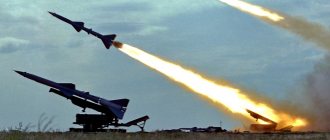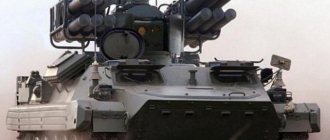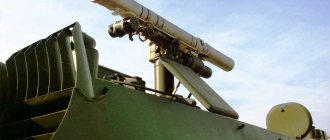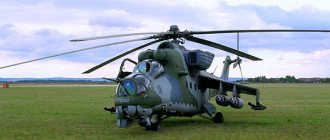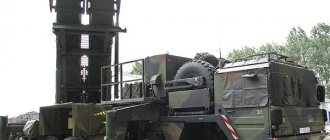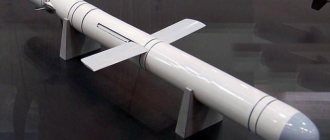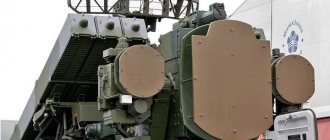In 2022, it has already been 35 years since the anti-aircraft missile system of the “Thor” series, created by specialists from the capital’s NIEMI, stood up to defend the army of the USSR.
For eleven long years, work proceeded on the development of an air defense system, the analogues of which at that time did not exist in the states of a possible enemy. Later, constant modernization of the combat characteristics of this complex was carried out. Today, the Torov performance characteristics are highly rated not only by Russian military experts, but also by reputable foreign experts.
SAM modifications
The Tor system has already undergone deep improvements three times - first in 1991 to Tor-M1, later in 2009 to Tor-M2U, and then in 2016 the complex was upgraded to the Tor-M2 level. Each such wave of improvements significantly increased the performance characteristics of the weapon, making it significantly better than its predecessors.
In addition, each version of the Tor air defense system has its own modifications, differing from each other in chassis options, the composition of the combat complex, operating conditions, tactical and technical characteristics, as well as the performance of certain assigned tasks.
Thus, “Tor-M1” (9K331) has modifications:
- "Tor-M1T" (equipped with three chassis options),
- "Tor-M1TA" (wheeled chassis based on Ural-5323),
- "Tor-M1TV" (towed),
- "Tor-M1TS" (stationary),
- "Tor-M1-2U" (modernized).
"Tor-M2" has modifications:
- "Tor-M2E" (9K332ME) - tracked chassis,
- "Tor-M2K" (9K332MK) - wheeled chassis,
- "Tor-M2DT" (9K331MDT) - for operation in special conditions (arctic),
- "Tor-M2KM" (9K331MKM) - modular version.
In addition, the naval version of the Tor air defense system, the Kinzhal anti-aircraft complex, equipped with a 9M330-2 missile, can be considered a separate cluster.
History of creation
Work on the creation of a divisional autonomous self-propelled air defense system "Tor" began at NIEMI in accordance with the Resolution of the CPSU Central Committee and the Council of Ministers of the USSR, dated February 4, 1975. The scientific research work (R&D) on a given research topic was code-named “Tor” (order 038). I. M. Drize was appointed as the responsible executor from the parent organization. In 1975, a tactical and technical specification was issued, and in 1976, a preliminary technical design was defended. The chief designer of the Tor air defense system is V. P. Efremov. The complex was put into service on March 19, 1986.
Structures involved
The following structures were involved in the development and production of the Tor complexes:
- The complex as a whole - Scientific Research Electromechanical Institute, Moscow (development); Machine-Building Plant named after M. I. Kalinin, Sverdlovsk, Sverdlovsk region. (production), Mari Machine-Building Plant, Yoshkar-Ola, Mari Autonomous Soviet Socialist Republic (production);
- Combat vehicle - Izhevsk Electromechanical Plant, Izhevsk, Udmurt Autonomous Soviet Socialist Republic (production);
- Rocket - MKB "Fakel", Khimki, Moscow region. (development);
- Onboard missile equipment - Izhevsk Electromechanical Plant, Izhevsk, Udmurt Autonomous Soviet Socialist Republic (production);
- Launcher and transport-loading vehicle - State Design Bureau of Compressor Engineering, Sverdlovsk, Sverdlovsk region. (development);
- Tracked chassis - Mytishchi Machine-Building Plant, Mytishchi, Moscow region. (production);
- Drives - VNII "Signal", Kovrov, Vladimir region. (development); Lyubertsy Agricultural Engineering Plant named after. A. V. Ukhtomsky, Lyubertsy, Moscow region. (production);
- Near-range location systems - Scientific Research Institute of Electronic Devices, Novosibirsk, Novosibirsk region. (development);
- Work on installation, configuration, testing and commissioning of stationary facilities for field testing of the complex - Construction and installation department No. 304, Kuntsevo, Moscow region. (construction).
- Crawler tractor - Minsk Tractor Plant, Minsk, Belarusian SSR (development/production);
Performance characteristics
Over 35 years, the intelligence indicators of the complex have increased many times over. Now the response time to changes in the situation in the air has been reduced to 1 second, instead of 3 for the initial version of Thor. The modern complex detects 48 targets instead of 24 per antenna rotation. Thus, in 3 seconds, “Tor-M2” is capable of “seeing” six times more targets (144 units) at a range of 32 km.
The fire characteristics of the complex have also objectively increased. Now the key feature of the newest “Thors” is the effective counteraction to high-precision weapons and all existing types of unmanned combat equipment. If the first samples of the Tor-type air defense system were able to fire at only one detected target, then the current complexes can simultaneously fire at 4 enemy UAVs. Increased guidance accuracy made it possible to use only one missile per enemy unit of equipment, instead of 2, as was the case before.
Today, the probability of effectively defeating the enemy with one fired Tor-M2 is 97%. The ammunition load of the complex has also doubled, which is now 16 missiles. Military SAM operators claim that they were able to shoot down targets reaching speeds of up to 1000 m/sec in the air, which is almost three sound speeds. In the foreseeable future, analysts expect the Tor complexes to be able to intercept aircraft and missiles reaching speeds of up to Mach 3.
Thanks to modern technological solutions and design discoveries of Izhevsk gunsmiths, the Tor air defense missile systems were the very first in the world to be able to effectively hit the enemy on the move. This year, measures were taken to modernize the software of the Tor-M2 type equipment. Fire was officially confirmed at a vehicle speed of 40 km/h. The newest combat mode has made the range of capabilities of the Tor-M2 air defense system wider, when covering allies on the march from air attack.
Modified "Torahs" set world records for the time to deploy to a combat position from the field. Today, this process takes no more than 3 minutes, which is 3-4 times faster than foreign analogues.
"Verba" for landing
The supply of Verba MANPADS to the troops continues. In August of this year, it became known that all airborne and airborne assault divisions of the Airborne Forces had already been re-equipped with Verba. According to Airborne Forces Commander Colonel-General Andrei Serdyukov, “Verba” is capable of hitting tactical aircraft, attack helicopters, cruise missiles and remotely piloted aircraft on oncoming and catch-up courses, in day and night conditions with visual visibility of the target, including conditions of background and artificial interference.
| MANPADS 9K333 Verba. |
| Source: © Photo: Research and Production Corporation “Design Bureau of Mechanical Engineering” |
Among the advantages of the Verba is the ability to fire on a collision course at targets with low infrared radiation at the far edge of the affected area at extremely low altitudes. New short-range systems, unlike their predecessors (Igla MANPADS), have expanded combat capabilities and provide high efficiency in hitting targets, despite powerful optical countermeasures.
Compared to previous MANPADS, the Verba has a several-fold increased zone of fire on targets with low thermal radiation and tens of times increased immunity from powerful pyrotechnic interference. While the procedure for the combat use of new MANPADS is similar to the procedure for using the previous generation systems, Verba has reduced the consumption of missiles to hit one target and expanded the temperature range of use to minus 50 degrees. MANPADS are capable of hitting stealth targets of a mock enemy at altitudes from 10 m to 4.5 km and at ranges from 500 m to 6.5 km.
Combat use of the complex
The developers of the air defense system are actively using the experience gained during the use of “Thors” in the armed conflict in the vastness of Syria. Thus, during the defense of the Khmeimim air base, the complex managed to hit more than six dozen enemy airborne equipment. The interaction of the Thors with the Pantsir-S series RPKs and long-range weapons of the S-400 type also turned out to be successful.
Anti-aircraft missile systems of the "Thor" type, according to the developers, are "team players". The successful use of this effective technology largely depends on the efficiency and reliability of information data transmitted between all members of the air defense “team”. For combat use as part of layered air defense systems, it is necessary to very carefully carry out calculations of each link, achieving this by improving the means of technical interface and effective training of operators of anti-aircraft missile systems.
It is necessary to separately highlight the work carried out on the information and technical merging of “Torov” with short-range systems, as well as the creation of a small-sized budget missile to destroy inexpensive UAVs.
SAM "Dagger"
Compound
- Combat vehicle 9A330. The basis of the air defense missile system is a combat vehicle. It is equipped with guidance and target detection stations, a launcher, an electronic computer, a navigation and topographical system, starting automation, a life support system and a gas turbine unit. All these components are mounted on the Object 355 tracked chassis. 9M330 missiles are launched vertically for safety reasons from bomb and shell fragments and adverse weather.
- Target detection station. A coherent pulse panoramic radar searches for air targets and then determines their coordinates. There is a “friend or foe” system. Operates in the centimeter range with private beam elevation control. Its review can be carried out by three beams simultaneously, their turn is determined by a computer.
- All necessary information about the target appears on the BM commander’s indicator. If there is significant interference, the problematic viewing area can be blanked out, and then the coordinates are entered into the computer using manual coordinate acquisition and the application of a marker. Large errors in the process of identifying coordinates cannot be more than half the resolution of the target detection station. The possibility of detecting, for example, an F-15 aircraft flying at a distance of 25-27 km and an altitude of 30 to 6000 meters is 80%. In order to quickly find targets, protection against anti-radar missiles is in place.
- Guidance station. Coherent-pulse radar is used in detecting and subsequently automatically tracking a target in three coordinates using the monopulse method, and guiding up to two missiles to the target after launch. Operates in the centimeter range. Its design is a phased small-element antenna array. Using an antenna array transmitter, guidance commands are sent on board and at the same time the coordinates of the target and the missiles aimed at it are determined.
- SAM 9M330. 9M330 anti-aircraft guided missiles are located in the launch container. The launcher and antenna devices are a single structure, its rotation occurs vertically. This modification is made according to the “duck” pattern. When the launch occurs, the rockets fly out using a catapult, after which the folding wings open. In order for the rocket to be aimed at a given angle, the machine has a gas generator. At a distance of 250 meters, the command guidance mode is activated. Proportional to the speed of approach for optimal destruction, information about the fuse delay is transmitted to the missiles. At low altitude, the fuse can be triggered when touching the target and selecting the surface. The missiles are equipped with a solid propellant engine.
Promising future
Izhevsk engineers guarantee that the Torov’s ammunition load will soon increase significantly by placing 3 small-sized projectiles in a standard launch container at once, designed to effectively hit UAVs at close range and repel massive drone attacks.
Two years ago, the Izhevsk electromechanical enterprise Kupol signed a large contract with the Ministry of Defense of the Russian Federation for the supply of a large batch of Arctic and tracked Tors until 2027. As General Oleg Salyukov, head of the Russian Ground Forces, emphasized, it is the military complexes of the Tor-M2 type that have shown themselves to be the most effective means of combating enemy UAVs.
Latest Russian air defense systems
The Russian military can intercept an air target at a long distance (from 200 kilometers) using the S-400 Triumph anti-aircraft missile system. This air defense system entered service in 2007. The complex was created specifically to provide protection in the event of a likely attack from both space and air. According to experts, the S-400 is capable of destroying a target at an altitude of no more than 30 thousand meters.
In 2012, a new anti-aircraft missile gun system, the Pantsir S1 air defense missile system, entered service. With the help of guided missiles and automatic cannons, for which radio command guidance, radar and infrared tracking are provided, the target is destroyed wherever it is. The air defense missile system has twelve surface-to-air missiles and two anti-aircraft guns.
The latest Russian innovation is the Sosna air defense system, which operates in a short range. According to experts, this complex is designed for fragmentation-rod and armor-piercing effects. Missiles can destroy enemy armored vehicles, ships and fortifications. The air defense system is effective in combination against high-precision weapons, drones and cruise missiles. A laser is used for guidance: the missile flies towards the beam.
Notes
Sources
- ↑, p. 220.
- Davydov M.V.
, Years and People, p. 284 - , With. 135.
- , With. 131.
- , With. 256.
- , With. 68.
- , With. 257.
- , With. eleven.
- , With. 307.
- , With. 448.
- , With. 160.
- , With. 143.
- , With. 264.
- , With. 198.
- , With. 198-199.
- , With. 199-200.
- , With. 200.
- , With. 200-201.
- , With. 201-203.
- , With. 204-205.
- , With. 204-207, 210.
- , With. 206-208.
- ↑, p. 211.
- The Military Balance 2016. - P. 190.
- Alexander Khramchikhin Army of one war // Military-industrial courier: Newspaper. — 2016. — March 16 (No. 10 (625)). — ISSN 1729-3928
- ↑ The Military Balance 2012. - P. 405.
- ↑ The Military Balance 2012. - P. 406.
- The Military Balance 2016. - P. 104.
- The Military Balance 2016. - P. 106.
- The Military Balance 2016. - P. 326.
- The Military Balance 2016. - P. 242.
- The Military Balance 2016. - P. 85.
- The Military Balance 2016. - P. 330.
Modern air defense weapons
Tor-M2U, created, like its predecessors, for the security of military and industrial facilities from air threats, has shown its effectiveness in countering the most high-precision models of modern weapons, cruise missiles, and modern military aircraft.
The Tor-M2U multi-mission missile system is capable of identifying more than 40 target objects at once, recognizing the most dangerous ones and firing simultaneously at four of them. The complex is effective during massive air attacks. The specific design allows the M2U to withstand highly maneuverable and small-sized targets. The complex is used as a component of a general air defense system, but can also perform combat missions in autonomous mode.
